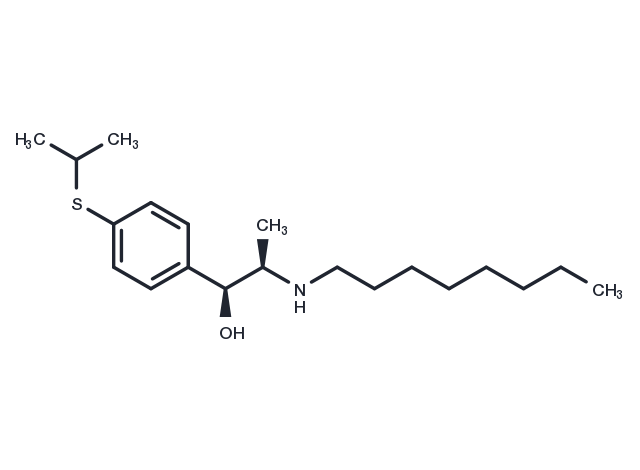Powder: -20°C for 3 years | In solvent: -80°C for 1 year


Suloctidil is a peripheral vasodilator that was formerly used in the management of peripheral and cerebral vascular disorders. It is hepatotoxic and fatalities have occurred.

| Pack Size | Availability | Price/USD | Quantity |
|---|---|---|---|
| 100 mg | In stock | $ 254.00 | |
| 200 mg | In stock | $ 428.00 | |
| 1 mL * 10 mM (in DMSO) | In stock | $ 89.00 |


| Description | Suloctidil is a peripheral vasodilator that was formerly used in the management of peripheral and cerebral vascular disorders. It is hepatotoxic and fatalities have occurred. |
| Kinase Assay | Protein Kinase profiling assay: Assay for 22 different proteins kinases is carried out by ProQinase Gmbh. All of the protein kinases are expressed either in Sf9 insect cells or in E.coli as recombinant GST-fusion proteins or His-tagged proteins. Protein kinases are purified by affinity chromatography using either GSH-agarose or Ni_NTH-agarose. A radiometric protein kinase assay is used for measuring the kinase activity of the 22 protein kinases. Briefly, for each protein kinase, 50 μL reaction cocktail containing 60 mM HEPES-NaOH, 3 mM MgCl2, 3 mM MnCl2, 3 μM Na-orthovanadate, 1.2 mM DTT, 50 μg/mL PEG20000, 1 μM [γ-33P]-ATP, Niclosamide, adequate amount of enzyme and its substrate. The PKC-alpha assay additionally contain 1 mM Cacl2, 4 mM EDTA, 5 μg/mL phosphatidylserine and 1 μg/mL 1, 2-Dioleyl-glycerol. The reaction cocktails are incubated at 37 °C for 60 minutes and stop with 50 μL 2% (v/v) H3PO4. Incorporation of 33Pi is determined with a microplate scintillation counter. The activities and the IC50 values are calculated using Quattro Workflow V2.28. |
| Molecular Weight | 337.56 |
| Formula | C20H35NOS |
| CAS No. | 54767-75-8 |
Powder: -20°C for 3 years | In solvent: -80°C for 1 year
DMSO: 50 mg/mL (148.12 mM)
You can also refer to dose conversion for different animals. More
bottom
Please see Inhibitor Handling Instructions for more frequently ask questions. Topics include: how to prepare stock solutions, how to store products, and cautions on cell-based assays & animal experiments, etc.
Suloctidil 54767-75-8 Membrane transporter/Ion channel Others ATPase Platelet aggregation Inhibitor Na+/K+ ATPase inhibit Sodium potassium pump inhibitor
